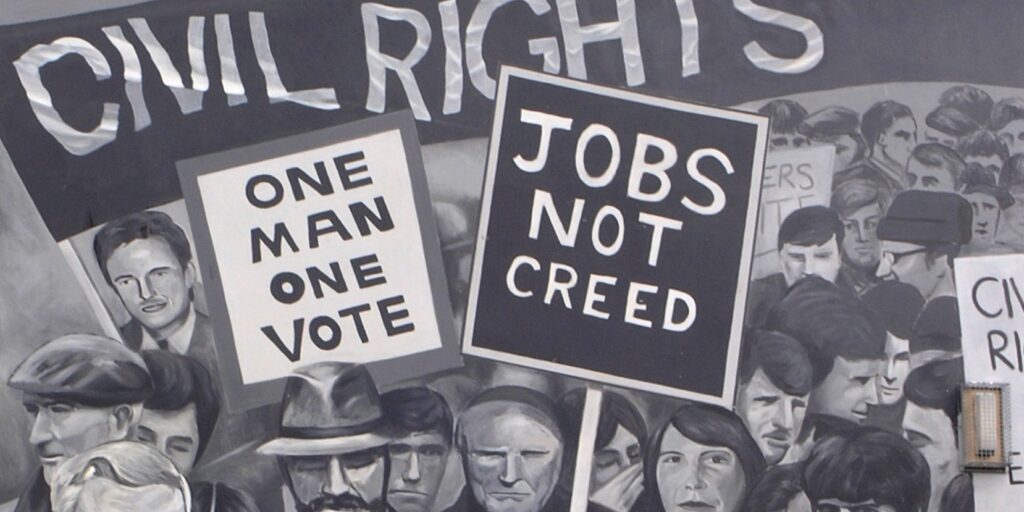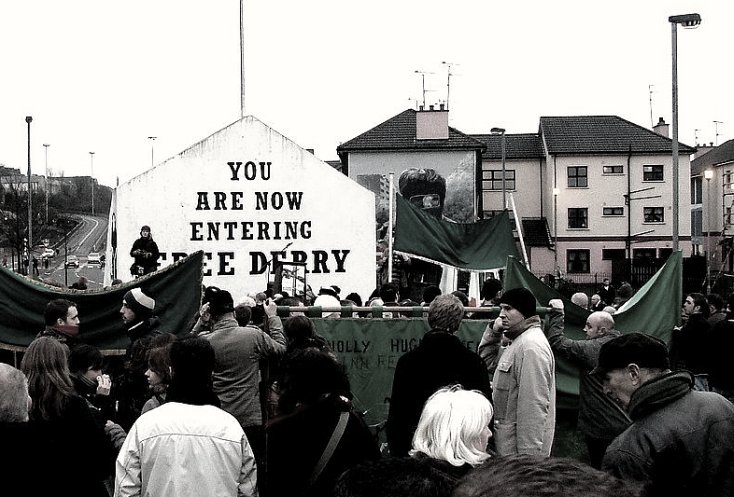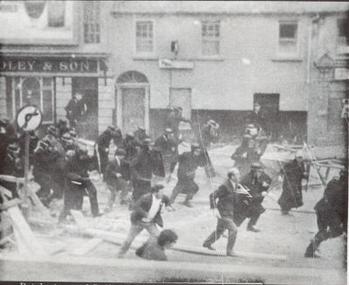The Troubles
Hostilities on sectarian background in Derry are neither unimportant nor new phenomenons. Since ages Catholic and Protestant inhabitants of the city have been living in conflict and constant tension, transparent even back in the 17th century during The Siege of Derry. This aggression intensified especially in the 20th century during a period called The Troubles.
Background
The population of The Walled City is divided into two main groups:
The Unionists (loyalists), those faithful to the British Crown believing the province should be part of The United Kingdom and who are in majority part of Protestant Church.
The Nationalists, those wanting to once again become part of The Republic of Ireland and who are mainly part of the Roman Catholic Church.
In 1922, after the division of Ireland and Northern Ireland, although the Catholics presented a majority of the population in Derry, it was the unionists who controlled the local government. This state of things was caused by the newly established law, which allowed only those in official possession of an apartment or housing lot to vote. Since it was mainly the loyalists who owned property and provided accommodation in the city, they got to choose who would become part of the government.

Because of that, those of Protestant belief were usually offered better employment offers and living conditions. The Catholics, especially part of the working class, usually inhabited parts of the town where houses were crowded but, at the same time, affordable, such as the Bogland.
As a form of protest against the discrimination in 1967 the Northern Ireland Civil Rights Association (NICRA) was established. Its members fought for equality, used the famous slogan “One man one vote” and carried out marches across Derry.
In 1968 NICRA held a march to protest about the housing situation in the city, even though the event was officially banned by the local authorities. As a result, the Royal Ulster Constabulary, commonly known as RUC, batonned the protesters and the firsts images of violence in the city were captured and published by the media. From this point on further protests and acts of hostility towards their participants continued and gradually became more and more severe.
The birth of Free Derry Corner
In 1969, after the riots surrounding a march of civil rights group People’s Democracy, which was attacked by groups of radical loyalists, the tension between the nationalists and police was especially high. At night, RUC officers invaded the houses of Catholic community of Bogside. This incident caused an outrage among the area’s citizens, even after authorities claimed that such occurrence was absolutely unjustified.

First barricades, which were meant to stop the police forces from entering the area, were erected by over 1500 of Bogside inhabitants and the area was patrolled by nationalist volunteers. A local activist (supposedly believed to be John Casey or Liam Hillen) using graffiti paint wrote a sign “You are now entering Free Derry” on a building on the corner of Lecky Road and Fahan Street. Thus, Free Derry was born – one of the most known no-police zones in Derry.
Battle of Bogside
On 12th of August 1969 the parade of Apprentice Boys took place, which memorialised the victory of Protestants in the infamous Siege of Derry. As the parade passed the Catholic area of Bogside, stones started to be thrown by both participants and observers of the march and the commemoration quickly escalated into a brutal battle between loyalists accompanied by police and nationalist of Bogside and nearby areas. Petrol bombs, napalms and CS gas were commonly used as the conflict spread into Belfast, which resulted in the death of 6 people and number of casualties.

The riots lasted for 2 days, to the point when the government of the city of London decided to take action and sent troops to appease the situation in Derry. The Battle of Bogside is often referred to as the actual beginning of The Troubles, as rapid riots around the city and fatalities have become more and more common since.
The Internment
Internment – imprisonment of individuals or groups without providing proper justification or process. In Derry, this kind of arrest was introduced by the government in order to discourage rioting and involvement of the IRA in Derry’s matters. On 9th of August 1971 for the first time Catholic nationalists were put under sudden arrest and such acts continued until December 1975.

Even though internment was supposed to suppress the tensions among the residents of Derry, the situation only got worse because of it and the most serious events of The Troubles have yet to come.